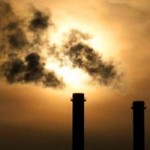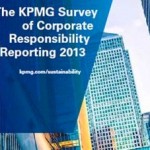
Geneva – Depletion of the ozone layer – the shield that protects life on Earth from harmful levels of ultraviolet rays – has reached an unprecedented level over the Arctic this spring because of the continuing presence of ozone-depleting substances in the atmosphere and a very cold winter in the stratosphere. The stratosphere is the second major layer of the Earth’s atmosphere, just above the troposphere.
The record loss is despite an international agreement which has been very successful in cutting production and consumption of ozone destroying chemicals. Because of the long atmospheric lifetimes of these compounds, it will take several decades before their concentrations are back down to pre-1980 levels, the target agreed in the Montreal Protocol on Substances that Deplete the Ozone Layer.
Observations from the ground and from balloons over the Arctic region as well as from satellites show that the Arctic region has suffered an ozone column loss of about 40% from the beginning of the winter to late March. The highest ozone loss previously recorded was about 30% over the entire winter.
In Antarctica, the so-called ozone hole is an annually recurring winter/spring phenomenon due to the existence of extremely low temperatures in the stratosphere. In the Arctic, the meteorological conditions vary much more from one year to the next and the temperatures are always warmer than over Antarctica. Hence, some Arctic winters experience almost no ozone loss, whereas cold stratospheric temperatures in the Arctic lasting beyond the polar night can occasionally lead to substantial ozone loss.
Even though this Arctic winter was warmer than average at ground level, it was colder in the stratosphere than for a normal Arctic winter.
Unprecedented But Not Unexpected
Although the degree of Arctic ozone destruction in 2011 is unprecedented, it is not unexpected. Ozone scientists have foreseen that significant Arctic ozone loss is possible in the case of a cold and stable Arctic stratospheric winter. Stratospheric ozone depletion occurs over the Polar Regions when temperatures drop below -78°C. At such low temperatures, clouds form in the stratosphere. Chemical reactions that convert innocuous reservoir gases (e.g., hydrochloric acid) into active ozone depleting gases take place on the clouds particles. The result is rapid destruction of ozone if sunlight is present.
Ozone depleting substances such as chlorofluorocarbons (CFCs) and halons, once present in refrigerators, spray cans and fire-extinguishers, have been phased out under the Montreal Protocol. Thanks to this international agreement, the ozone layer outside the Polar Regions is projected to recover to its pre-1980 levels around 2030-2040 according to the WMO/UNEP Scientific Assessment of Ozone Depletion. In contrast, the springtime ozone layer over the Antarctic is expected to recover around 2045-2060, and in the Arctic, it will probably recover one or two decades earlier.
Without the Montreal Protocol, this year’s ozone destruction would most likely have been worse. The slow recovery of the ozone layer is due to the fact that ozone-depleting substances stay in the atmosphere for several decades. In the Polar Regions, the drop in ozone depleting gases is 10% of what is required to return to the 1980 benchmark level.
Global Atmosphere Watch
“The Arctic stratosphere continues to be vulnerable to ozone destruction caused by ozone-depleting substances linked to human activities,” said WMO Secretary-General Michel Jarraud. “The degree of ozone loss experienced in any particular winter depends on the meteorological conditions. The 2011 ozone loss shows that we have to remain vigilant and keep a close eye on the situation in the Arctic in the coming years,” he said.
“WMO’s Global Atmosphere Watch Network has many stations in the Arctic and helps us to obtain an early warning in case of low ozone and intense UV radiation.”
If the ozone depleted area moves away from the pole and towards lower latitudes, one can expect increased ultraviolet (UV) radiation as compared to the normal for the season. As the solar elevation at noon increases over the next weeks, regions affected by the ozone depletion will experience higher than normal UV radiation. The public is recommended to stay informed through national UV forecasts.
It should be pointed out, however, that the UV radiation will not increase to the same intensity as one suffers in the tropical regions of the globe. The sun is still relatively low in the sky, and this limits the amount of UV radiation that passes through the atmosphere.
UV-B rays have been linked to skin cancer, cataracts and damage to the human immune system. Some crops and forms of marine life can also suffer adverse effects.
Background
The stratosphere is the second major layer of the atmosphere, above the troposphere and below the mesosphere. The stratosphere starts at about 10 km altitude and reaches up to an altitude of about 50 km. About 90% of the ozone in the atmosphere is found the stratosphere with the remaining 10% in the troposphere. The ozone in the stratosphere is called the ‘ozone layer’, which absorbs ultraviolet light and protects life on earth from harmful ultraviolet radiation from the sun. The ozone in the troposphere, and especially close to the ground, is unwanted because it is a corrosive gas that causes damage to vegetation and can harm lung function and irritate the respiratory system in humans and animals.
Increased amounts of greenhouse gases lead to higher temperatures at the surface of the earth, but models show that the stratosphere at the same time will get colder. Therefore, ozone scientists have foreseen that significant ozone loss can happen in the Arctic stratosphere. If the cold temperatures persist into spring, i.e., when the sun comes back after the polar night, ozone destruction speeds up. In Antarctica, such conditions prevail every winter/spring season, whereas in the Arctic, the variability from one year to the next is much larger. Large ozone loss is, therefore, not an annually recurring phenomenon in the Arctic stratosphere. While increased amounts of long-lived greenhouse gases, such as carbon dioxide and methane, are expected to cause some cooling of the stratosphere in the long term, it cannot explain the large variations in temperature that is observed from one year to the next in the Arctic stratosphere.














